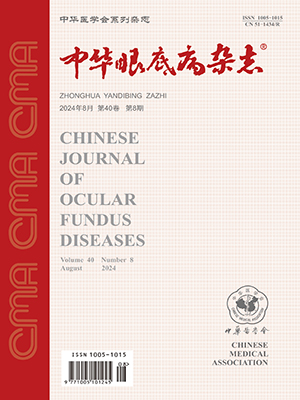Objective To observe the clinical effects of vitreoretinal surgery for myopic foveoschisis, evaluate the visual prognostic factors. Methods Twentyseven eyes of 23 patients with myopic foveoschisis underwent vitreoretinal surgery were analyzed retrospectively. All the patients had undergone the examinations of best corrected visual acuity (BCVA), intraocular pressure, slit lamp microscope, direct ophthalmoscope, binocular indirect ophthalmoscope, A or B ultrasonic scan and optical coherence tomography (OCT). Follow-up duration varied from 6 to 36 months, with the mean of (19.4±10.03) months. The visual acuity, retinal reattachment and the complications were observed. Logistic regression analysis was performed to predict the prognosis of visual acuity. Results Twentyone eyes (7778%) were anatomically reattached, six eyes (2222%) were not anatomically reattached. Postoperative BCVA improved in 24 eyes (8889%), reduced or remained unchanged in three eyes (11.11%). No ocular complications such as fundus hemorrhage, low or high intraocular pressure, endophthalmitis were found. The preoperative BCVA (OR=9.11, P=0.007), axial length (OR=0.31, P=0.038) and the photoreceptor inner and outer segment (IS/OS) junction line continuity (OR=4。32,P=0.001) are closely related to visual prognosis. Conclusions Vitreoretinal surgery is an effective approach to treat myopic foveoschisis with both anatomical and visual improvement. The preoperative BCVA, axial length and IS/OS line continuity are closely related to visual prognosis.
Citation: 孙敏,孙吉君,宋宗明. The visual prognostic factors in vitreoretinal surgery for myopic foveoschisis. Chinese Journal of Ocular Fundus Diseases, 2012, 28(2): 117-120. doi: Copy




